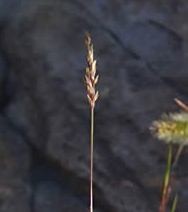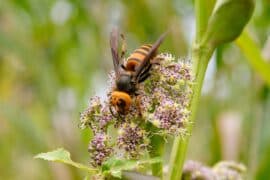Poverty grass
(Sporobolus vaginiflorus)

Description
Sporobolus vaginiflorus is a species of grass known by the common names poverty grass, poverty dropseed, and sheathed dropseed. This bunchgrass is native to eastern, central North America, including the Great Plains, extreme Southwestern United States, and the California Sierra Nevada. It is present elsewhere in western and northwestern North America, as native or an introduced species. It grows in many types of habitats, including grasslands, open woodlands, and montane meadows, often in disturbed areas and in sandy and calcareous soils. Sporobolus vaginiflorus is an annual bunchgrass producing one or more stems 70 to 80 cm (28 to 31 in) long. The wiry stems may be decumbent or erect, and are bent near the bases. They are sheathed by the leaf bases, which are sometimes swollen or inflated and may have lines or tufts of short hairs. The herbage is green to purple in color. The inflorescence is a dense, narrow, spikelike panicle no more than about 5 cm (2 in) long. It may be partially or completely enclosed in the sheath of the uppermost leaf. The spikelets are purple, pinkish, yellowish, or grayish in color and may be shiny. Sporobolus is a nearly cosmopolitan genus of plants in the grass family. The name Sporobolus means "seed-thrower", and is derived from Ancient Greek word σπόρος (spóros), meaning "seed", and the root of βάλλειν (bállein) "to throw", referring to the dispersion of seeds. Members of the genus are usually called dropseeds or sacaton grasses. They are typical prairie and savanna plants, occurring in other types of open habitat in warmer climates. At least one species (S. caespitosus from Saint Helena) is threatened with extinction, and another (S. durus from Ascension Island) is extinct. While some dropseeds, such as prairie dropseed (Sporobolus heterolepis), make nice gardening plants, they are generally considered to make inferior pastures, but seeds of at least some species are edible and nutritious; they were used as food, for example, by the Chiricahua Apaches. Other species are reported to be used as famine foods, such as Sporobolus indicus in parts of the Oromia Region of Ethiopia, where it is known as muriy in Oromiffa. Known as popote de cambray, Sporobolus grasses are used in popotillo art or straw mosaics, a Mexican folk art with pre-Columbian origins. The 1889 book The Useful Native Plants of Australia records that Sporobolus actinocladus is a "Perennial; seeds in October and November.
Taxonomic tree:







